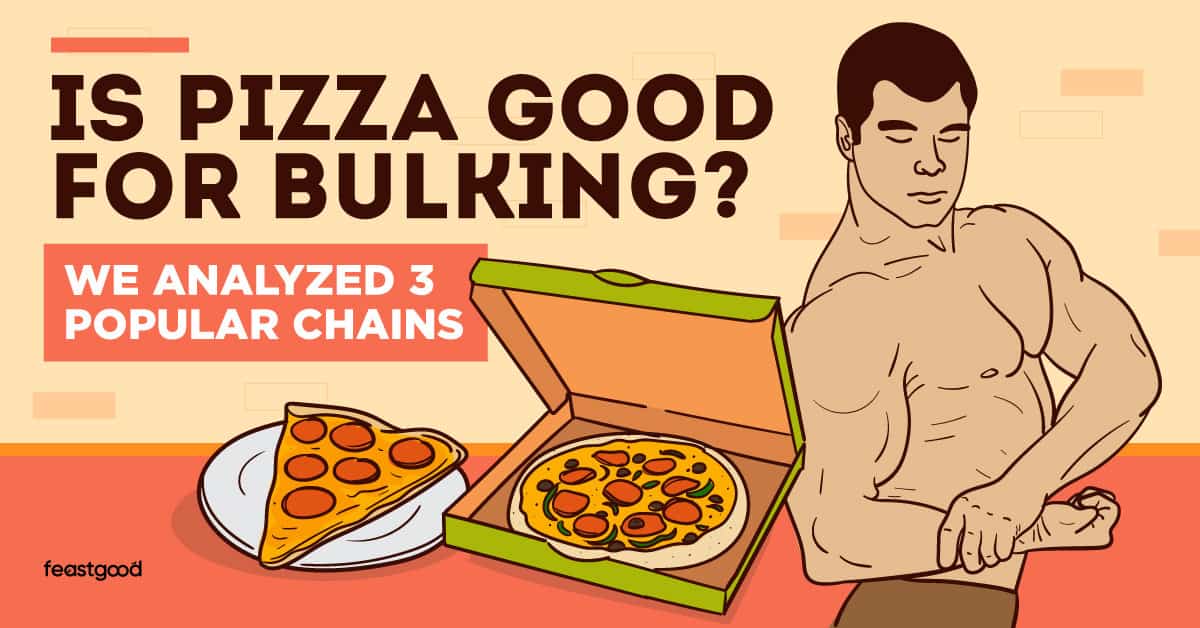If you’re like my nutrition clients, you may be wondering if pizza is actually good for bulking.
Pizza is good for bulking because it’s high in calories, carbs, and fats so it can help you meet the calorie requirements for gaining mass more easily. However, pizza is low in protein, which is essential for muscle growth. So it needs to be paired with other high-protein foods (i.e. chicken).
Although pizza can help you hit your calorie target, there are some important rules you should consider when having pizza on a bulking diet to guarantee your success and maintain your health.
Key Takeaways
- Pizza should not be eaten as a pre or post-workout meal because its nutrients aren’t ideal for fueling performance or promoting recovery.
- When incorporating pizza into your bulking diet more frequently, it’s important to prioritize micronutrients (fruits and veggies) at other meals to ensure you’re maintaining your health.
- Pizza shouldn’t be eaten every day, even when your goal is bulking.
Check Out Our Complete Guide on Fast Food For Bodybuilding
Can You Eat Pizza While Bulking?
Yes, you can eat pizza while bulking because you will have a higher calorie intake when you’re bulking.
Some people find it challenging to eat enough to hit their calorie and macro goals while bulking, so having pizza, a high-calorie food, can make bulking easier.
That said, if you are easily hitting your calorie and macro targets while bulking, then fitting pizza into your plan will require you to plan for it in advance.
Pizza is often a staple food for those who are “dirty bulking” (aggressively bulking with lower quality foods), but it can also be included in a “clean bulk” (bulking with nutrient-dense foods) from time to time.
4 Bodybuilding Rules To Follow When Eating Pizza
The 4 rules to follow for eating pizza while bodybuilding are:
1. Fit Pizza Into Your Calorie & Macro Targets
Making pizza fit into your calorie and macro goals for the day is important to keep on track with your bulking goals.
If you go over your macros (especially if this is happening often) then you will likely gain more fat than you want. I’m assuming your goal while bulking is to gain as much muscle as possible, and not fat.
Everyone will have different requirements while bulking; for some, it may be easy to include pizza and still hit daily targets, whereas for others it may require more careful macro planning to make pizza fit.
Ultimately, as long as you’re accounting for pizza in your targets and not going off the rails, then you will stay on track with your bulking goal.
- Related Article: How To Hit Your Macros – check out my top tips
2. Choose Higher Protein Toppings
Getting enough protein throughout the day is key for muscle growth, so it’s important to choose high-protein toppings for your pizza to help you meet your daily protein goals.
Pizza doesn’t have enough grams of protein per serving to be considered a high-protein food, so it can be difficult to consume enough protein when you’re ordering pizza.
Most of the protein toppings that come on pizza are higher in fat than protein (i.e. sausage), so you really have to be strategic about ordering toppings that are higher in protein (i.e. chicken).
If you don’t get enough protein from your pizza then you will have to be really intentional about getting enough protein at other meals throughout the day to meet your daily goal.
As well, almost all pizza places will allow you to customize your pizza, so it’s best to ask for “double protein” servings.
At places like Domino’s, they even have an online ordering option for “triple protein”.
3. Avoid Having Pizza As A Pre-Workout Or Post-Workout Meal
Pizza isn’t a great option for a pre-workout or post-workout meal so it’s important to reserve pizza for meals that are further away from your workout if you want to optimize your performance in the gym and increase your potential to gain muscle.
I’ll explain this more later on, but for now, just know that you shouldn’t be eating pizza to fuel your performance.
You’ll likely feel groggy, bloated, and sluggish if you go into a workout after just eating pizza.
4. Prioritize Micronutrients At Other Meals
When you’re bulking and you have more flexibility with the foods you can eat due to higher calorie requirements it can be tempting to eat pizza more often; however, it’s important to remember that your health is still a priority.
Pizza is typically quite low in micronutrients (vitamins and minerals) because it’s made with more processed ingredients and most people aren’t loading their pizza with tons of vegetables or eating it with a salad.
For this reason, you could end up in a situation where you’re not getting enough nutrients throughout the day and increasing your risk of developing a nutrient deficiency.
I recommend prioritizing nutrient-dense foods like fruits and veggies at other meals throughout the day to help maintain your health while you bulk.
What’s In Pizza, Anyway? A Look At The Macros
The calorie, macronutrient, and micronutrient content of pizza will change depending on the thickness of the crust, the ingredients, and the number of toppings, so no two slices of pizza will have the same macros; but, it’s better to estimate than to not track it at all.
The average slice of regular-crust pizza has the following information:
| Based on 1 slice (107g) | Cheese Pizza | Pepperoni Pizza | Sausage Pizza | Meat & Veg Pizza |
|---|---|---|---|---|
| Calories | 285 calories | 313 calories | 325 calories | 332 calories |
| Carbs | 35.6 grams | 35.5 grams | 35.5 grams | 34.5 grams |
| Protein | 12.2 grams | 13 grams | 13.3 grams | 15 grams |
| Fat | 10.4 grams | 13.2 grams | 14.4 grams | 14.8 grams |
Using this information, we can say that pizza has an average of 313.8 calories, 35.3g carbs (45% carbs), 13.4g protein (17% protein), and 13.2g fat (38% fat).
Key Takeaway: As you can see, pizza is high in carbs and fat but low in protein (even with meat toppings).
What Makes Pizza Good For Bulking?
Despite the lack of protein, pizza is still good for bulking because of its higher calorie content, which comes from having higher amounts of carbs and fat.
Those who are bulking have the goal of putting on mass (likely muscle and some fat), which is only possible if they’re consuming more calories than they need to maintain their weight. This is called a calorie surplus.
- Related: Learn the signs of being in a caloric surplus.
For example, if you maintain your weight by eating 2300 calories, then you would need to eat more than 2300 calories (ideally 250-500 more) to gain mass.
With pizza being higher in calories, it can be easier to meet bulking calorie requirements without feeling uncomfortably full. This is important for those who consider themselves “hard gainers”, and struggle with h itting their calorie surplus.
What Makes Pizza Bad For Bulking?
On the flip side, pizza by itself isn’t fantastic for bulking because it’s low in protein, and protein is essential for building muscle. Those who are bulking likely want the mass they gain to come from muscle, rather than just fat.
Those who are bulking can get away with 0.7 grams of protein per pound of bodyweight per day, but if they’re not meeting this requirement (at a minimum) then muscle growth may not be possible.
For example, if you weigh 170lbs then you should be eating at least 119 grams of protein per day to encourage muscle growth while bulking. If you only get 15-20 grams of protein while eating pizza, you will need to up the amount of protein throughout the rest of the day.
Additionally, pizza is very low in micronutrients (vitamins and minerals) and high in saturated fat, so it’s not the best option for your overall health.
The American Heart Association (AHA) states that:
“Saturated fats can cause problems with your cholesterol levels, which can increase your risk of heart disease”
On a daily basis, the AHA recommends eating no more than 6% of your total calories coming from saturated fat. For someone on a 2000 calorie diet, this is 13g of saturated fat (120 calories).
Depending on the type of pizza you eat, you would likely reach this amount within 3 slices.
The key point to understand is that if you consume pizza regularly and fail to get enough micronutrients, or monitor your overall saturated fat intake, then you may increase your risk for health issues over time.
Is There An Ideal Time To Eat Pizza While Bulking?
The ideal time to eat pizza while bulking is for any meal other than your pre-workout or post-workout meals.
Having pizza around your workout may be tempting because this is when you’re expending the most energy but the macros in pizza aren’t optimal for enhancing your performance or helping you recover.
Although pizza is high in carbs, which are the body’s preferred energy source, it is also high in fat which slows digestion and can cause cramps and discomfort if consumed pre-workout.
- Related: Should You Eat Fat Before A Workout?
Pizza as a post-workout meal also isn’t ideal because its fat content slows down energy replenishment after a workout, and lacks protein for muscle repair and growth.
Here are the three optimal times for eating pizza while bulking:
- If you’re working out in the morning, eat pizza for supper.
- If you’re working out later in the evening (6 pm or later), have pizza for lunch.
- If you’re eating pizza on a non-training day, then any time of day is okay.
3 Best Pizza Places For Bulking
The best fast-food pizza places for bulking are:
1. Dominos
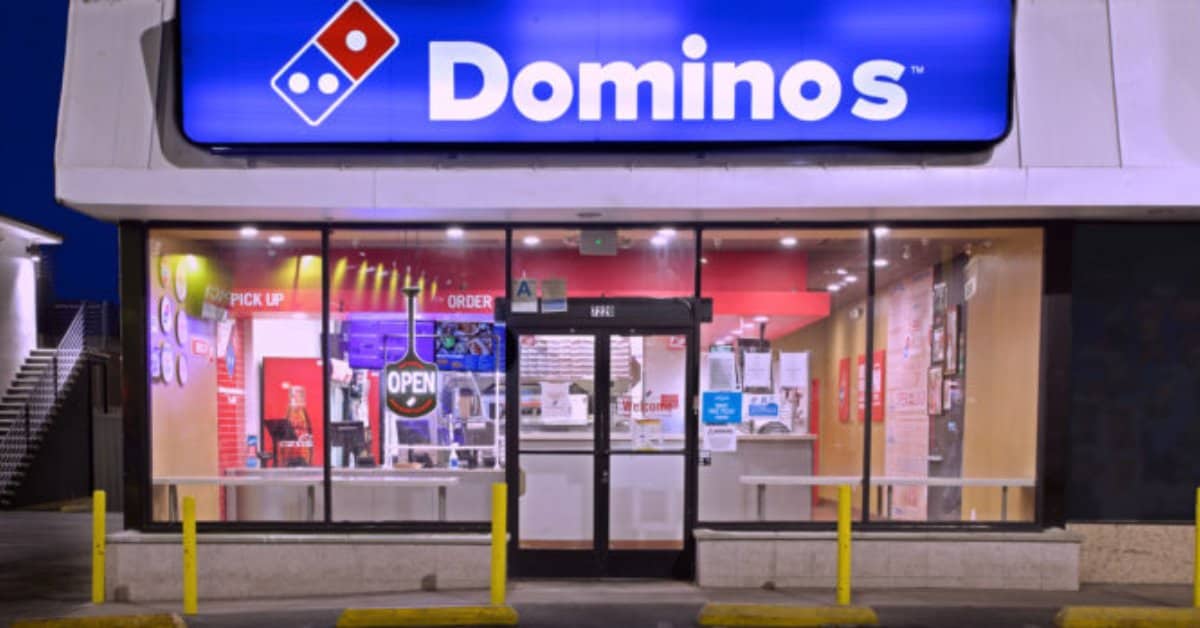
Why We Like It
- It is highly customizable so you can alter your order to meet your nutrition goals
- It’s more cost-effective than other fast food pizza, so you can get a lot of calories for cheap
Option #1: 700 Calorie Domino’s Bulking Meal
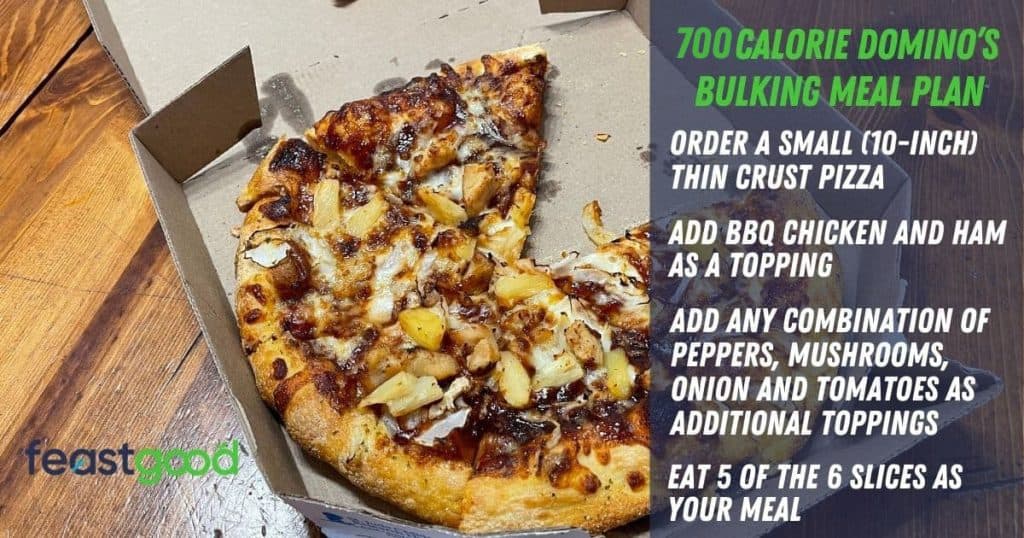
- 5 slices of 10-inch thin-crust pizza with bbq chicken, ham, peppers, mushrooms, onion, and tomatoes
- 660 calories, 30g protein, 60g carbohydrates, and 33g fat
Option #2: 900 Calorie Domino’s Bulking Meal

- 5 slices of 10-inch bbq chicken pizza
- 917 calories, 40g protein, 77g carbohydrates, and 50g fat
Option #3: 1200 Calorie Domino’s Bulking Meal
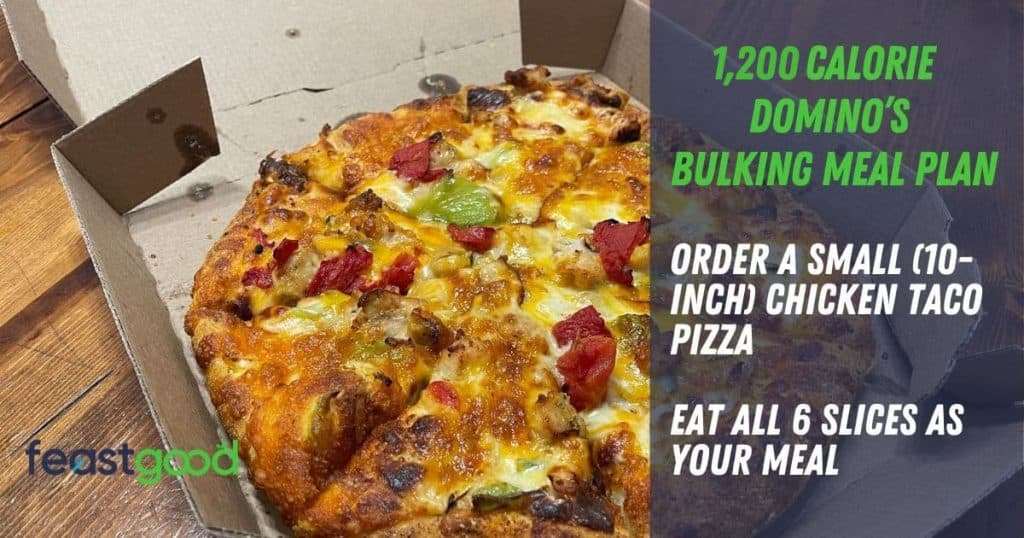
- 10-inch chicken taco pizza + ranch dipping sauce
- 1277 calories, 52g protein, 76g carbohydrates, and 85g fat
For more bulking meals from Domino’s check out Eating at Domino’s When Bulking (6 Bodybuilding Meals).
2. Little Caesars
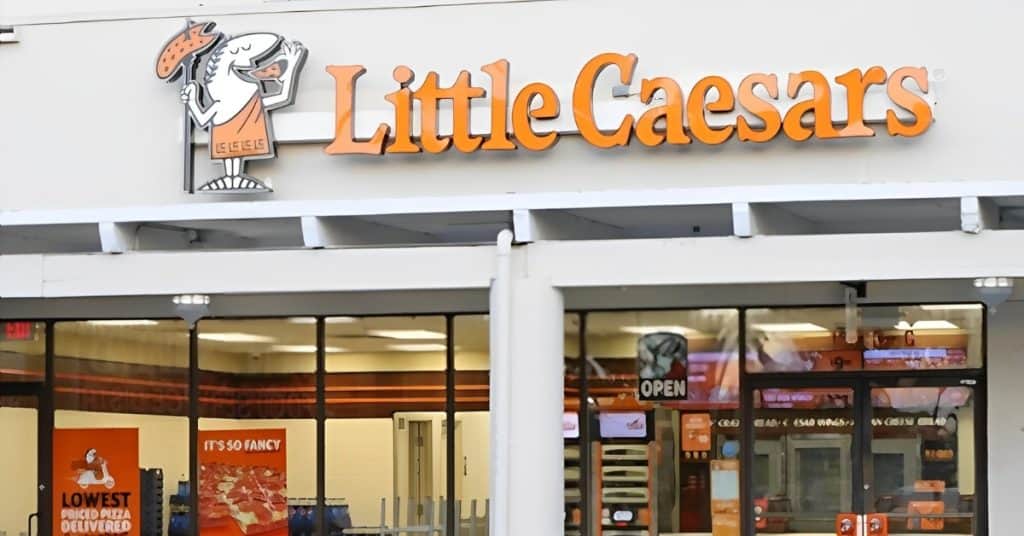
Why We Like It
- It has the highest average protein content than other fast food pizza places
- It has meal options for both bulking and cutting
- It’s lower in sodium than other fast food pizza
Option #1: 700 Calorie Little Caesars’ Bulking Meal
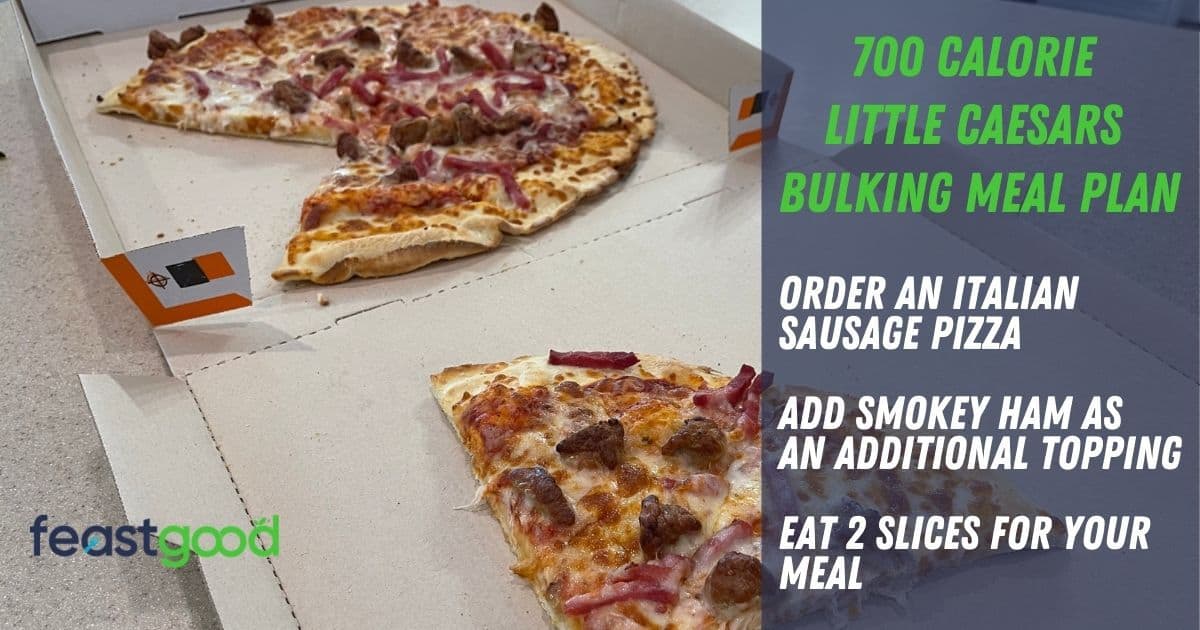
- 2 slices Italian sausage + smokey ham pizza
- 709 calories, 39g protein, 64g carbohydrates, and 33g fat
Option #2: 900 Calorie Little Caesars’ Bulking Meal
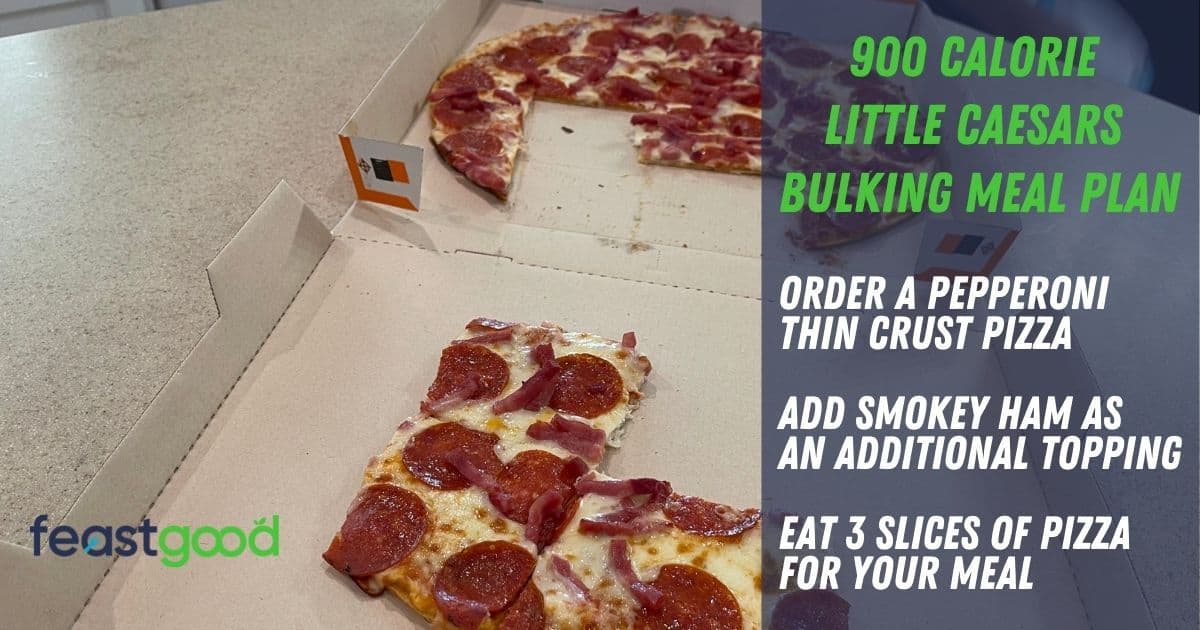
- 3 slices pepperoni + smokey ham thin crust pizza
- 878 calories, 46g protein, 57g carbohydrates, and 52g fat
Option #3: 1200 Calorie Little Caesars’ Bulking Meal
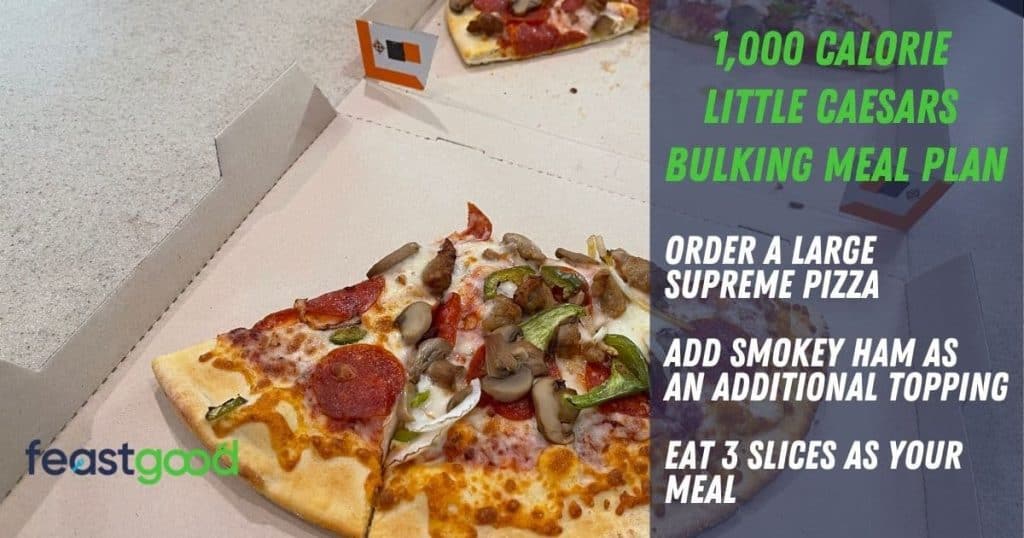
- 3 slices large supreme pizza + smokey ham + ranch
- 1171 calories, 53g protein, 98g carbohydrates, and 63g fat
For more bulking meals to order at Little Caesars check out Eating at Little Caesars When Bulking (6 Bodybuilding Meals).
3. Pizza Hut
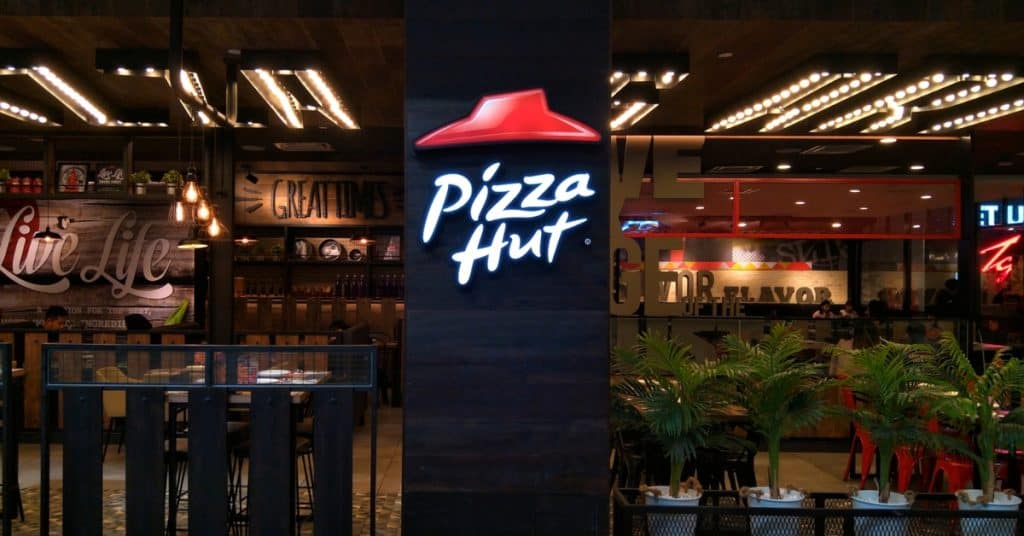
Why We Like It
- It has the highest calorie options making it easier to hit a higher calorie target
- There are higher protein options (as far as pizza goes), especially when ordering higher calorie meals
- It is higher in carbs than other pizza places to help you meet your carb goal while bulking
Option #1: 700 Calaorie Pizza Hut’s Bulking Meal
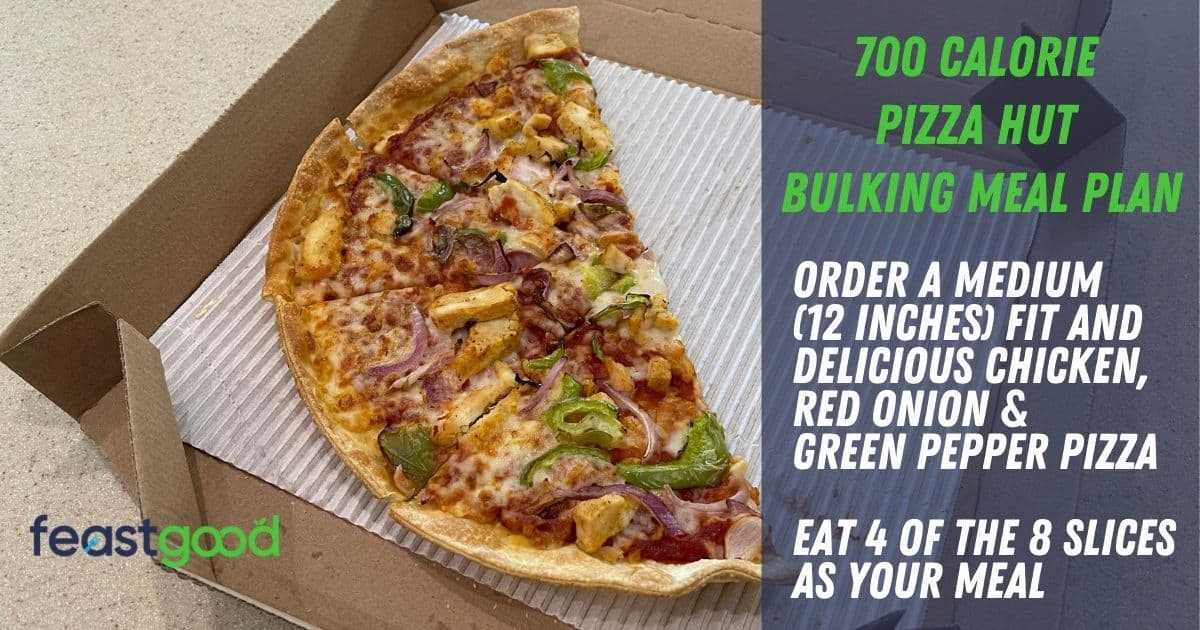
- 4 slices of 12-inch fit and delicious chicken, red onion & green pepper pizza
- 706 calories, 44g protein, 92g carbohydrates, and 18g fat
Option #2: 900 Calorie Pizza Hut’s Bulking Meal
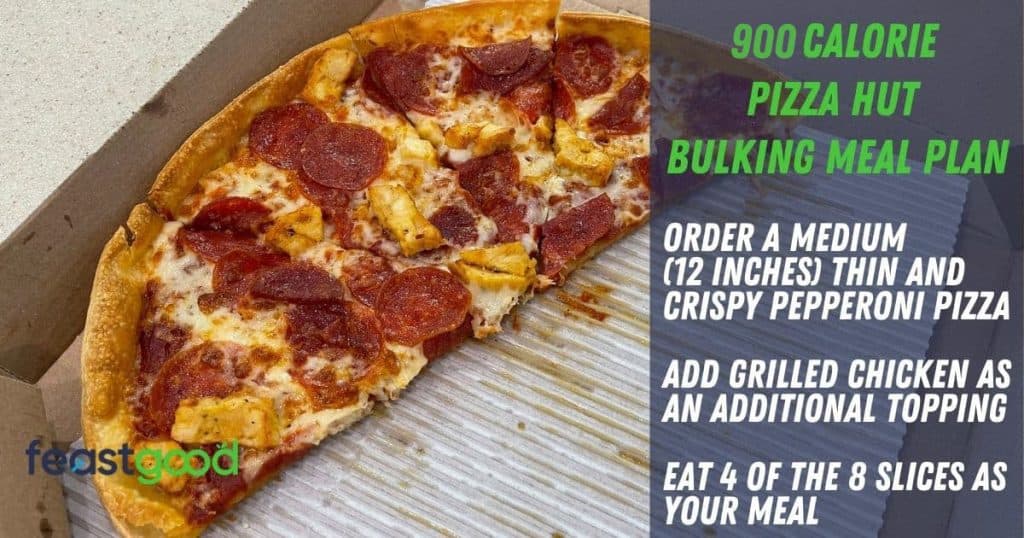
- 4 slices of 12-inch thin and crispy pepperoni pizza + grilled chicken
- 948 calories, 56g protein, 100g carbohydrates, and 36g fat
Option #3: 1200 Calorie Pizza Hut’s Bulking Meal
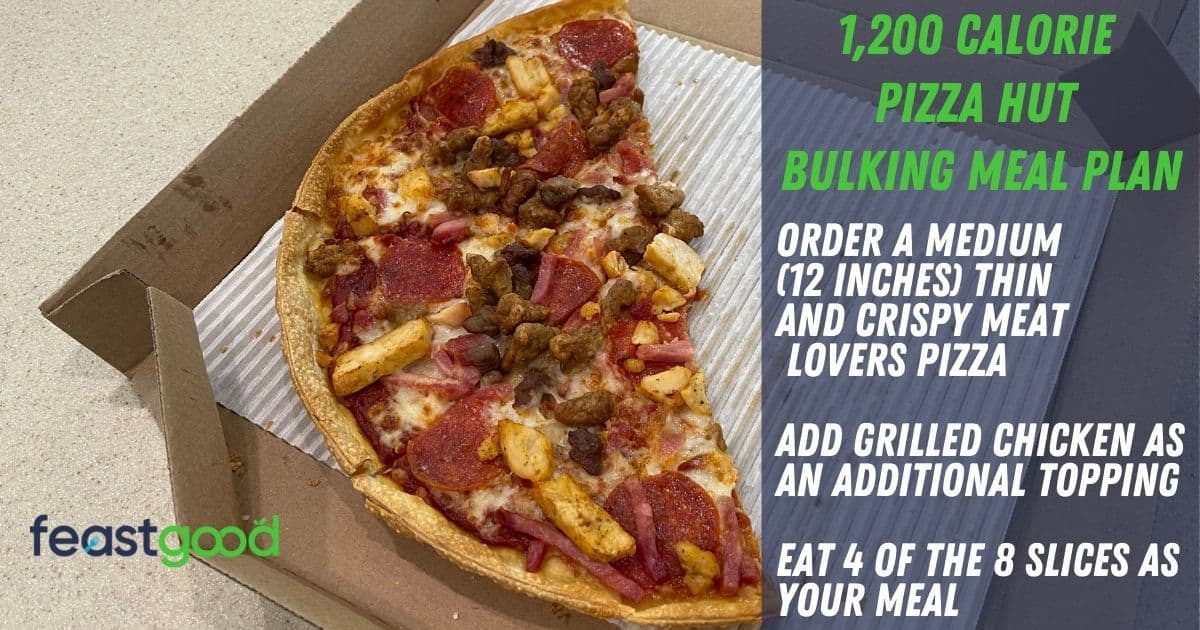
- 4 slices of 12-inch thin and crispy meat lovers pizza + grilled chicken
- 1216 calories, 72g protein, 88g carbohydrates, and 64g fat
For more bulking meal ideas from Pizza Hut check out Eating at Pizza Hut When Bulking (6 Bodybuilding Meals).
About The Author
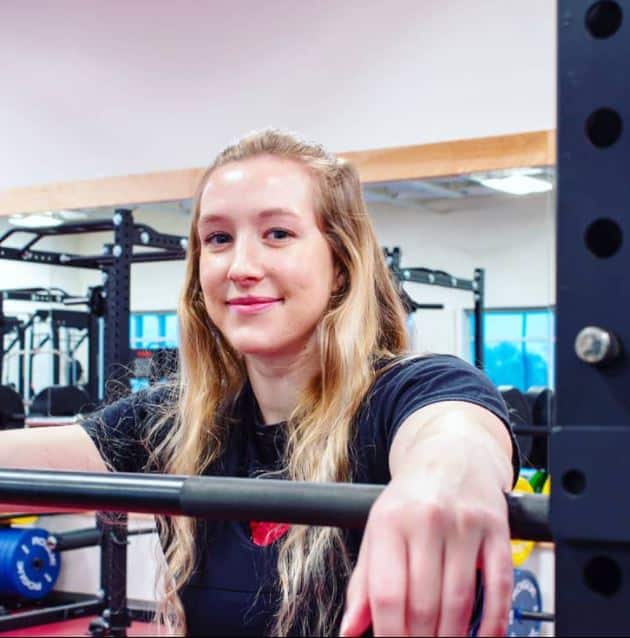
Amanda Parker is an author, nutrition coach, and Certified Naturopath. She works with bodybuilders, Olympic weightlifters, and powerlifters to increase performance through nutrition and lifestyle coaching.
Why Trust Our Content

On Staff at FeastGood.com, we have Registered Dietitians, coaches with PhDs in Human Nutrition, and internationally ranked athletes who contribute to our editorial process. This includes research, writing, editing, fact-checking, and product testing/reviews. At a bare minimum, all authors must be certified nutrition coaches by either the National Academy of Sports Medicine, International Sport Sciences Association, or Precision Nutrition. Learn more about our team here.
Have a Question?
If you have any questions or feedback about what you’ve read, you can reach out to us at [email protected]. We respond to every email within 1 business day.
